This article was co-authored by Tu Anh Vu, DMD. Dr. Tu Anh Vu is a board certified dentist who runs her private practice, Tu's Dental, in Brooklyn, New York. Dr. Vu helps adults and kids of all ages get over their anxiety with dental phobia. Dr. Vu has conducted research related to finding the cure for Kaposi Sarcoma cancer and has presented her research at the Hinman Meeting in Memphis. She received her undergraduate degree from Bryn Mawr College and a DMD from the University of Pennsylvania School of Dental Medicine.
There are 16 references cited in this article, which can be found at the bottom of the page.
wikiHow marks an article as reader-approved once it receives enough positive feedback. In this case, 84% of readers who voted found the article helpful, earning it our reader-approved status.
This article has been viewed 79,405 times.
Cavities are a form of tooth decay in your mouth. Left untreated, cavities can lead to more severe tooth problems, such as tooth pain.[1] If you are experiencing a toothache due to cavities, you can learn how to relieve the pain.
Steps
Stopping Cavity Pain Medically
-
1See your dentist. One way to get rid of cavity pain is to go to the dentist. Your dentist will do an exam and get x-rays of your teeth to see where any cavities or other tooth or gum problems are. Then, your dentist will suggest the best course of treatment for your cavity.[2]
- The most common treatment for cavities is a filling. If the tooth is infected or abscessed, your dentist may prescribe antibiotics first to clear up any infection, which is important to avoid any further complications.[3]
-
2Take over-the-counter medication.[4] If your tooth or gum aches because of a cavity, taking over-the-counter pain relievers may help reduce the pain. You can take ibuprofen (Advil), acetaminophen (Tylenol), naproxen (Aleve), or aspirin.[5]
- Follow the dosage instructions on the label.
- Make sure not to let aspirin dissolve on the tooth or gum. This may harm your mouth and teeth.[6]
Advertisement -
3Try numbing gels. You can try numbing gels around the area of the cavity to help stop the pain temporarily. Numbing gels contain benzocaine. You should spread the gel on your gums with either your finger or a cotton swab. Make sure you don’t swallow the gel. Spit out the gel left in your mouth.[7]
- Read and follow the instructions on the box or tube to know the amount of gel to apply and how often you should apply the gel.
- Keep in mind that if your saliva flow increases after you have applied the gel, that is absolutely normal. Your tongue may also go numb for a while, so you may want to avoid talking for a while or you may bite your tongue accidentally.
Using Home Remedies to Stop Cavity Pain
-
1Clean out the cavity. You may be experiencing pain in your cavity after you eat. This might be due to food being stuck in the cavity. To help relieve the pain, rinse your mouth with warm water. Then, use a toothpick to gently and carefully get any food out of the cavity.[8]
- Make sure not to poke too deep into the cavity because you could cause more damage to the tooth or gums.
-
2Make a salt water rinse. Rinsing your mouth with warm salt water is one of the most effective ways to help reduce pain in the mouth. Saltwater can help reduce acids in your gums, which may be leading to irritation and pain.[9]
- Stir in a tablespoon of salt into a glass of warm or lukewarm water until dissolved. Rinse with the solution, making sure to swish it around the sore gum and tooth.
-
3Use an ice pack. Another way to help cavity pain is to use an ice pack. Place some ice cubes or crushed ice into a towel, balloon, or the cut-off finger of a non-latex glove to make an ice pack. Place the ice pack on the tooth if it isn’t sensitive to cold.[10]
- You can also place the ice pack on your face just over the painful area.
- You can also use an ice pack that you buy in the store instead of making one yourself.
- Make sure that you wrap the ice pack in a cloth or paper towel before you use it.
- You can leave the ice pack on for about 10 to 15 minutes. Then, remove it and give your skin a chance to return to its normal temperature.
-
4Swish with hydrogen peroxide. Hydrogen peroxide can help remove bacteria in the cavity and clean the area to help reduce infection. Swish your mouth with a 3% solution of hydrogen peroxide. Keep it in your mouth for up to a minute.[11]
- Spit it out and make sure not to swallow this solution.
- Avoid using hydrogen peroxide solution for more than five days in a row or your teeth will get sensitive.
Trying Natural Remedies to Help with Cavity Pain
-
1Rub extracts on the tooth. One way to help relieve pain from a cavity is to use natural extracts. You can use vanilla, almond, peppermint or lemon extracts to relieve pain from a cavity. Soak a cotton ball in the extract, and then place the cotton ball on the tooth or gum where the ache is. Leave it there for around ten minutes.[12]
- You may also choose to put the extract on a Q-tip.
-
2Try essential oils. Some essential oils may aid in pain relief. Try using sunflower oil,[13] sesame oil, oregano oil,[14] nutmeg oil, clove oil,[15] or tea tree oil to stop cavity pain.[16]
- You can place a few drops of the oil into a few tablespoons of the water and rinse your mouth out with the rinse. You can also put the oil on a cotton ball or Q-tip and rub the oil directly onto the sore gum or tooth.
- You may want to try packing a cotton ball soaked in one of the oils, particularly clove oil, into the cavity. Try not to get the oil anywhere else in your mouth because it could cause irritation.[17]
- Make sure you don’t swallow the essential oil. Always spit it out.
-
3Chew leaves. Plantain and peppermint may help relieve pain in your mouth. To use for tooth cavity pain, place the leaves in your mouth and chew for a few minutes to release the helpful juices. Then, move the leaves over to the sore gum or tooth and let it rest there for around 15 minutes.[18]
- You may also choose to use dried peppermint leaves or peppermint tea.
- Plantains are backyard weeds that have healing properties. The plant is in almost every backyard. The leaves are easy to identify due to the long, vertical veins along the leaf.[19]
-
4Cover the sore area with citrus. You may be able to relieve cavity pain using fruit from your refrigerator. Lemons and limes may be able to stop tooth pain because of the citric acid and vitamin C, which have antibacterial properties.[20] [21]
- Cut the lemon or lime into slices. Then, bite into the slice to release juice into your mouth. Place the juice and the slice over your sore gum or tooth.[22]
-
5Make an apple cider vinegar rinse. Apple cider vinegar is used in many folk and home remedies.[23] To make a rinse for your sore mouth, combine ¼ cup of warm water with two tablespoons of apple cider vinegar. Swish the solution in your mouth for 30 to 60 seconds. Make sure to swish it around the tooth with the cavity.[24]
- Spit out the rinse and repeat two to three times. Rinse with warm water.
- You can do this three to four times a day, but do not swallow the water-vinegar mixture.
- Do not repeat the vinegar rinse for more than four days in a row. Vinegar contains acetic acid, which can erode the enamel surface, especially if you brush your teeth immediately after.
-
6Bite into garlic, onion, or ginger. Place a small piece of garlic, onion, or ginger in your mouth, directly over your painful tooth or gum area. Slowly bite down on the sliver, which will release the juice inside. This will relieve the pain by numbing the gums.[25]
-
7Try an asafetida paste. Asafetida is a plan used in Middle Eastern traditional medicine.[26] You can use this to make a paste to help with cavity pain. Combine ¼ teaspoon of asafetida powder with fresh lemon juice. Make sure to use enough lemon juice to make a thin, spreadable paste. Spread the paste on the cavity and around the gum. Leave it on for around five minutes.
- Rinse the paste from your mouth water.
- You can put the paste on your tooth two or three times each day.
Expert Q&A
-
QuestionHow do you stop a cavity from hurting at home?
 Tu Anh Vu, DMDDr. Tu Anh Vu is a board certified dentist who runs her private practice, Tu's Dental, in Brooklyn, New York. Dr. Vu helps adults and kids of all ages get over their anxiety with dental phobia. Dr. Vu has conducted research related to finding the cure for Kaposi Sarcoma cancer and has presented her research at the Hinman Meeting in Memphis. She received her undergraduate degree from Bryn Mawr College and a DMD from the University of Pennsylvania School of Dental Medicine.
Tu Anh Vu, DMDDr. Tu Anh Vu is a board certified dentist who runs her private practice, Tu's Dental, in Brooklyn, New York. Dr. Vu helps adults and kids of all ages get over their anxiety with dental phobia. Dr. Vu has conducted research related to finding the cure for Kaposi Sarcoma cancer and has presented her research at the Hinman Meeting in Memphis. She received her undergraduate degree from Bryn Mawr College and a DMD from the University of Pennsylvania School of Dental Medicine.
Board Certified Dentist Take over-the-counter pain medication, like Tylenol or Ibuprofen, and then try to avoid eating on the tooth until you see a dental professional.
Take over-the-counter pain medication, like Tylenol or Ibuprofen, and then try to avoid eating on the tooth until you see a dental professional.
References
- ↑ https://www.mayoclinic.org/diseases-conditions/cavities/symptoms-causes/syc-20352892
- ↑ Tu Anh Vu, DMD. Board Certified Dentist. Expert Interview. 20 May 2020.
- ↑ Tu Anh Vu, DMD. Board Certified Dentist. Expert Interview. 20 May 2020.
- ↑ Tu Anh Vu, DMD. Board Certified Dentist. Expert Interview. 20 May 2020.
- ↑ https://www.mayoclinic.org/first-aid/first-aid-toothache/basics/art-20056628
- ↑ https://www.dentalfearcentral.org/faq/diy-dentistry/
- ↑ https://www.mayoclinic.org/first-aid/first-aid-toothache/basics/art-20056628
- ↑ https://www.dentalfearcentral.org/faq/diy-dentistry/
- ↑ Tu Anh Vu, DMD. Board Certified Dentist. Expert Interview. 20 May 2020.
- ↑ https://www.mayoclinic.org/first-aid/first-aid-toothache/basics/art-20056628
- ↑ https://www.dentistrytoday.com/nanoparticles-break-up-plaque-and-prevent-cavities/
- ↑ https://www.lrfamilydentalcare.com/blog/immediate-tooth-pain-relief-emergency-dental-care/
- ↑ https://ami-journals.onlinelibrary.wiley.com/doi/pdf/10.1046/j.1365-2672.2001.01235.x
- ↑ https://pubmed.ncbi.nlm.nih.gov/23484421/
- ↑ https://pubmed.ncbi.nlm.nih.gov/26333873/
- ↑ https://www.lrfamilydentalcare.com/blog/immediate-tooth-pain-relief-emergency-dental-care/
- ↑ https://www.dentalfearcentral.org/faq/diy-dentistry/
- ↑ https://www.lrfamilydentalcare.com/blog/immediate-tooth-pain-relief-emergency-dental-care/
- ↑ https://gwens-nest.com/herb-identification-plantain/
- ↑ https://onlinelibrary.wiley.com/doi/abs/10.1111/j.1745-4565.2008.00131.x
- ↑ https://www.ncbi.nlm.nih.gov/pmc/articles/PMC2816438/
- ↑ https://www.lrfamilydentalcare.com/blog/immediate-tooth-pain-relief-emergency-dental-care/
- ↑ https://www.ncbi.nlm.nih.gov/pmc/articles/PMC1785201/
- ↑ https://www.mindbodygreen.com/0-14833/11-ways-to-use-apple-cider-vinegar-every-day.html
- ↑ https://www.humana.com/learning-center/health-and-wellbeing/healthy-living/toothaches
- ↑ https://www.ncbi.nlm.nih.gov/pmc/articles/PMC3459456/
About This Article
While cavity pain can be unpleasant, there are some home remedies you can use to relieve your aching mouth. Rinsing your mouth with warm salt water is one of the most effective ways to reduce mouth pain. Simply stir a tablespoon of salt into a glass of warm water until it’s dissolved, then swish the solution around your sore gum and tooth. Another way to help cavity pain is to place some ice cubes or an ice pack on the tooth or on your face just over the painful area. Leave the ice on for 10 to 15 minutes, and repeat as necessary. If you feel pain after eating, it could be due to food in your cavity, so rinse your mouth with warm water and use a toothpick to gently get any food out of it. To learn how to use medicine to help cavity pain, keep reading!
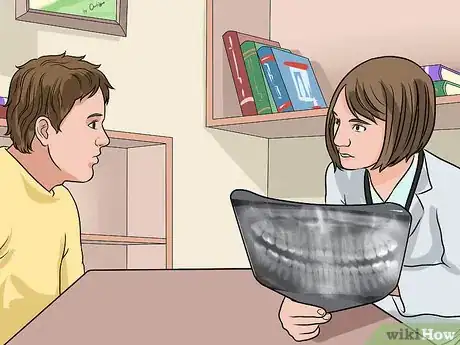

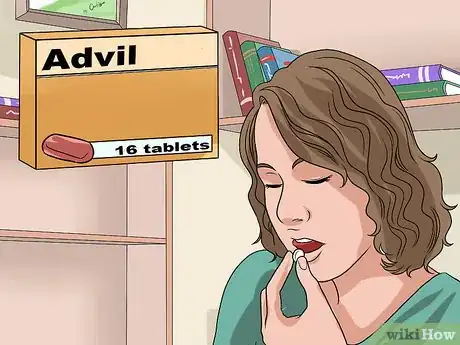

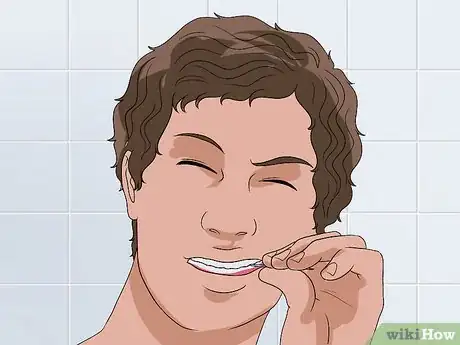
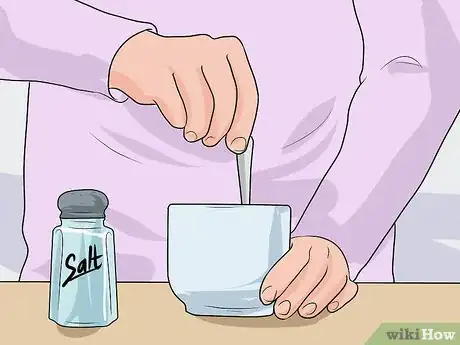

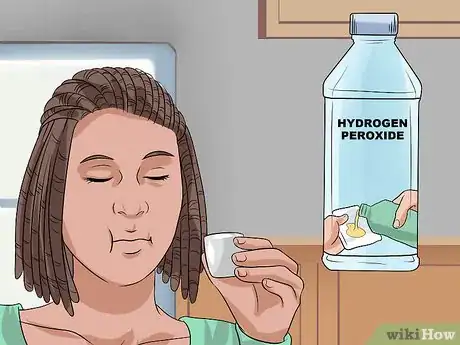
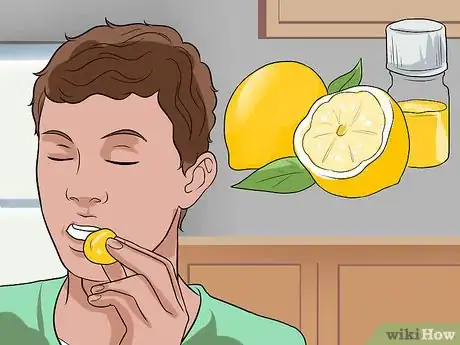
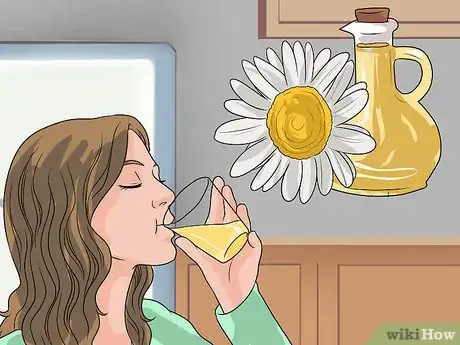
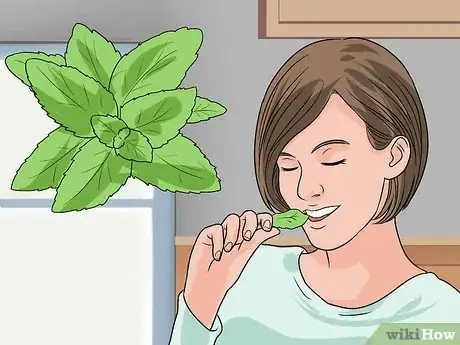
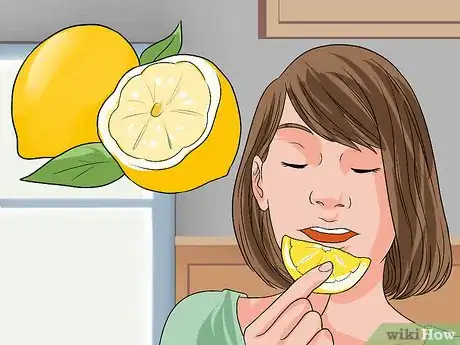

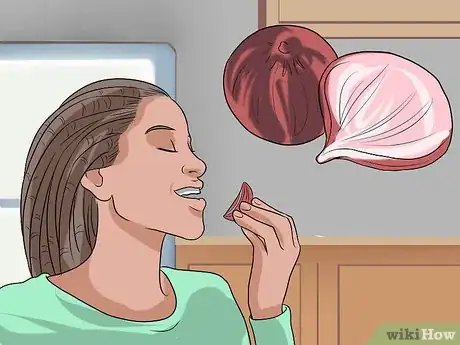
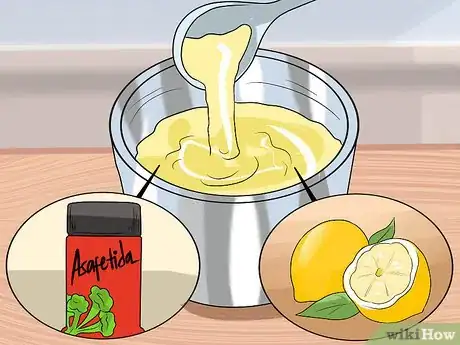

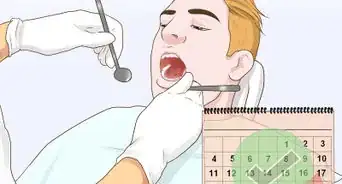


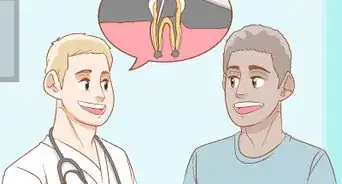
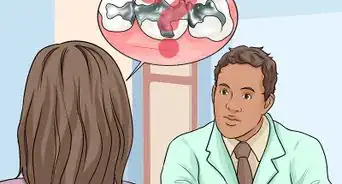
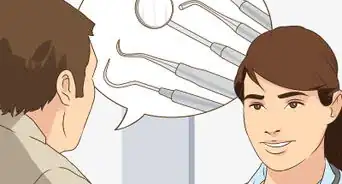



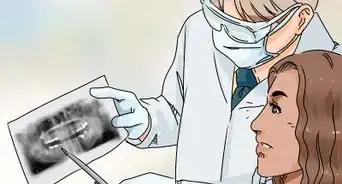


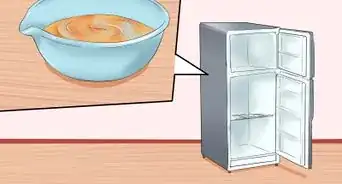









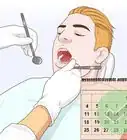

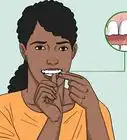



































Medical Disclaimer
The content of this article is not intended to be a substitute for professional medical advice, examination, diagnosis, or treatment. You should always contact your doctor or other qualified healthcare professional before starting, changing, or stopping any kind of health treatment.
Read More...